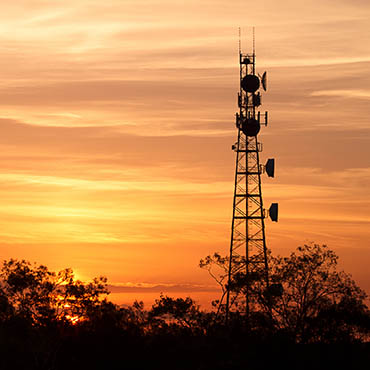Guthrie, Matsui renew bid to compensate federal agencies for spectrum

Under current law, agencies have no incentives to make more efficient use of their spectrum, curtail operations or share with other agencies.

(Image: Rob d / Shutterstock)
A record-breaking spectrum auction recently yielded more than $44 billion for government coffers. The Advanced Wireless Services 3 auction was the result of more than a decade of wheeling and dealing among leading commercial providers like AT&T and Verizon who wanted to lease the spectrum, members of Congress seeking more bandwidth for consumer services, and the Defense Department, which controlled the spectrum and wanted assurances that its operations could share spectrum with non-government users or be relocated.
The government hopes to eventually auction off as much as 500 MHz for use by commercial wireless broadband providers. The 65 MHz in the AWS-3 auction was just a start. The Obama administration's spectrum goals include freeing up spectrum controlled by federal agencies. Under current rules, federal agencies can be compensated for 110 percent of costs incurred in spectrum relocation. But agencies don't have incentives to make more efficient use of their spectrum, curtail spectrum operations, or share spectrum where viable with other agencies.
The co-chairs of the bipartisan Congressional Spectrum Caucus, Reps. Brett Guthrie (R-Ky.) and Doris Matsui (D-Calif.) have introduced a bill to give agencies more options on how to use money realized in spectrum auctions. The measure would give agencies the option of using funds to offset sequestration cuts.
"This legislation would create the first ever incentive auction for federal agencies and -- for once -- offer revenue to federal spectrum users. It is a game-changer," Matsui said in a statement. The bill is a replay of legislation introduced in the 113th Congress.
Under the legislation, agencies would have access to a Federal Spectrum Incentive Fund administered by the Office of Management and Budget. The legislation taps 1 percent of the proceeds from auctions of federal spectrum to go to the fund.
White House Deputy CTO Tom Power said at a Brookings Institution discussion last fall that agencies feel that their share of the proceeds should be higher. The Pentagon is getting $5.1 billion of the proceeds in the AWS-3 auction, according to a recent Congressional Research Services report, although DOD could face steeper costs than is typical to relocate or share a complex array of land-air, land-space, and land-sea communications.
Oregon Republican Rep. Greg Walden, chairman of the House Energy and Commerce Communications and Technology Subcommittee is backing the bill. "By incentivizing agencies to take a hard look at their modern spectrum needs and consider alternatives, we can free up even more spectrum for commercial or unlicensed use," Walden said at a March 26 hearing on spectrum.
The Federal Communications Commission and the National Telecommunications and Information Agency are working to free up 150 MHz in the 3.5 GHz band for sharing with incumbent federal users, primarily military radar systems. Roger Sherman, chief of the FCC Wireless Bureau, told the panel that, "through new innovative sharing technologies and policies, the commission can make this spectrum available for a variety of commercial use cases while continuing to protect important federal missions and other incumbent users."
Separately, the DoD, NTIA, and the National Institute for Standards and Technology announced plans to collaborate on testing new technology to manage the sharing of spectrum by multiple users, and to give commercial and academic participants access to high-tech lab facilities.
The new National Advanced Spectrum and Communications Test Network will support research into spectrum-sharing technologies, and give the private sector the opportunity to experiment while protecting both classified information of the military and space systems that present the most promising opportunities for sharing with terrestrial commercial providers, and the trade secrets of the companies that are developing the new technologies.
"NASCTN will play a critical role as we work toward fulfilling the administration’s commitment to making available an additional 500 megahertz of spectrum for commercial use by 2020 while safeguarding capabilities that are vital to federal interests," NTIA Administrator Larry Strickling said in a statement.
NEXT STORY: BlackBerry Is About to Hit Bottom



